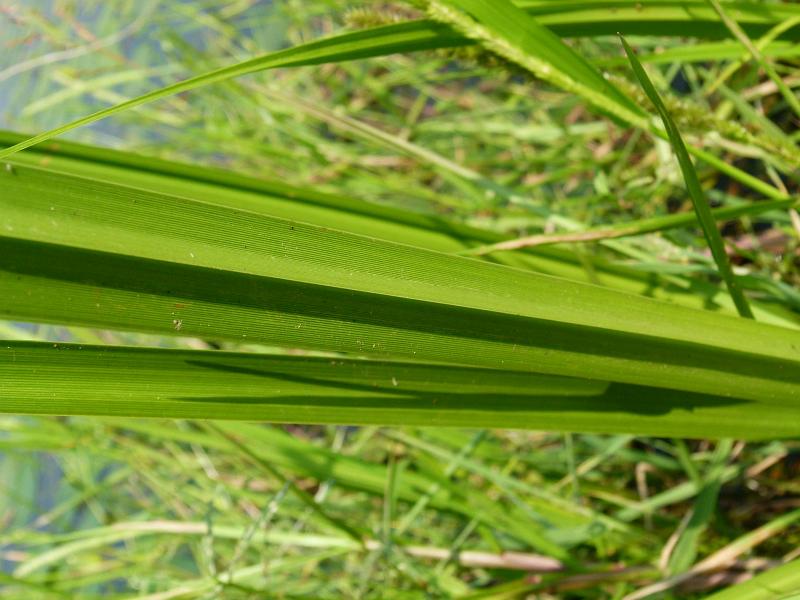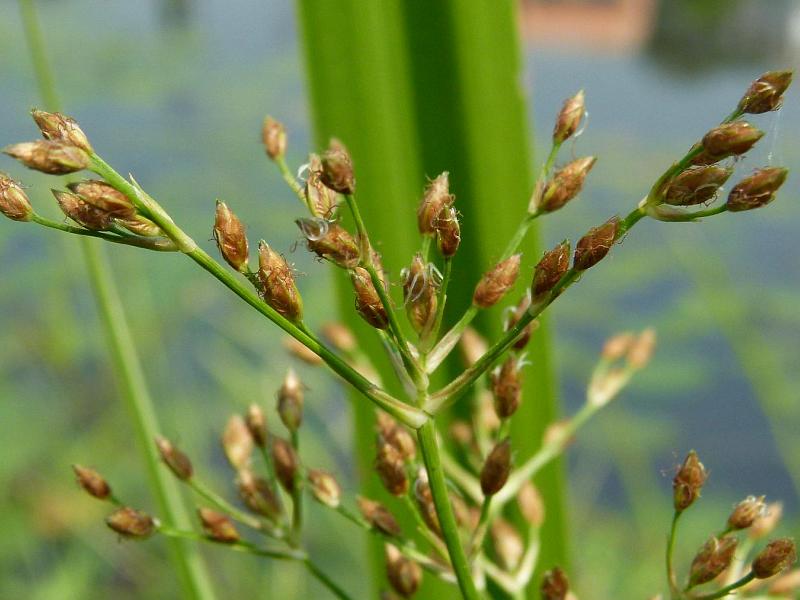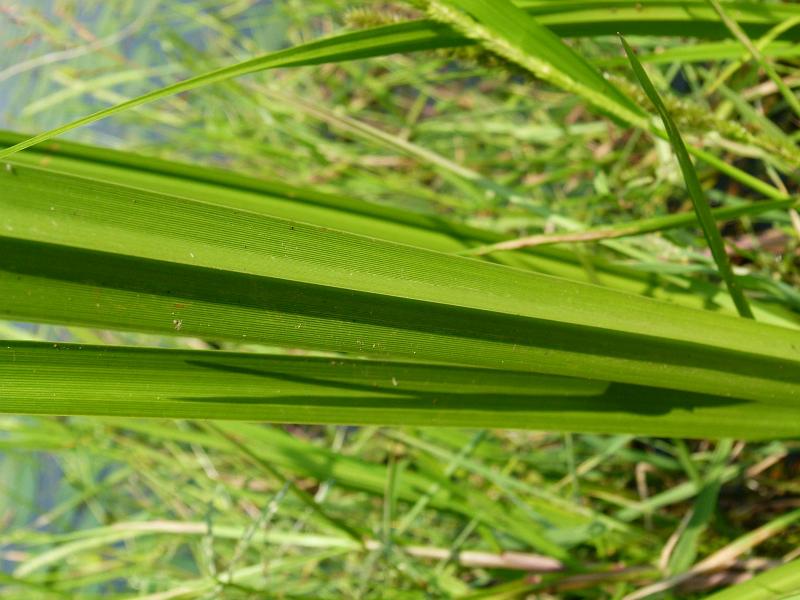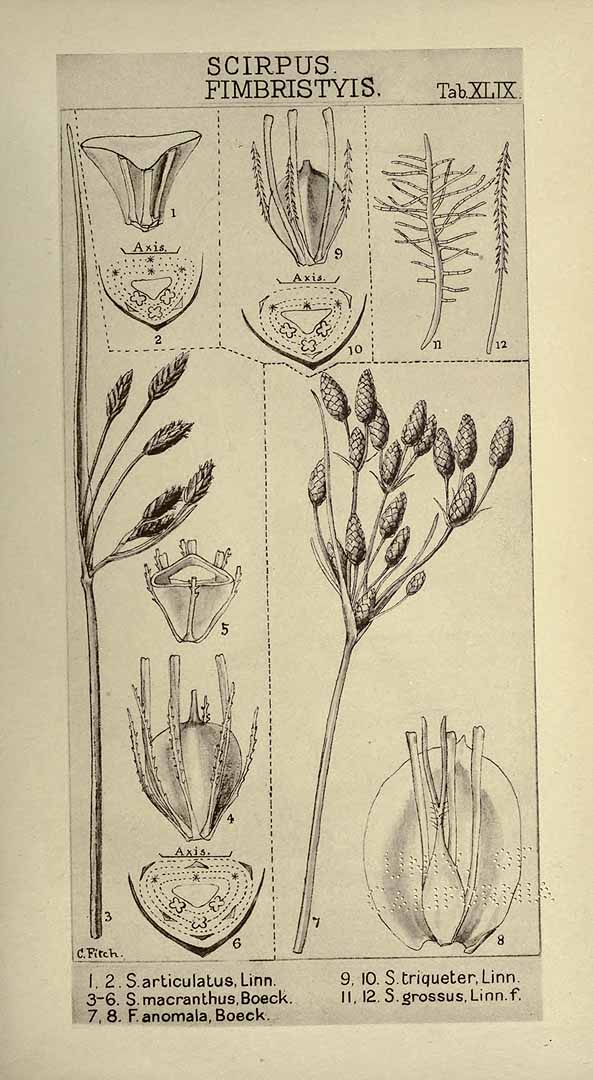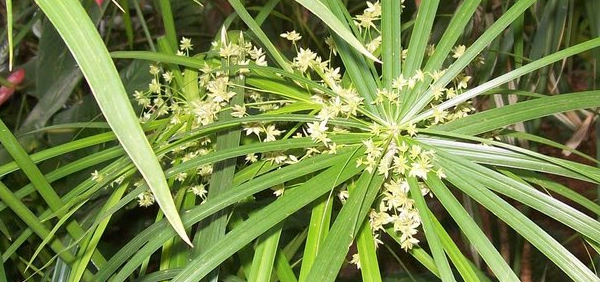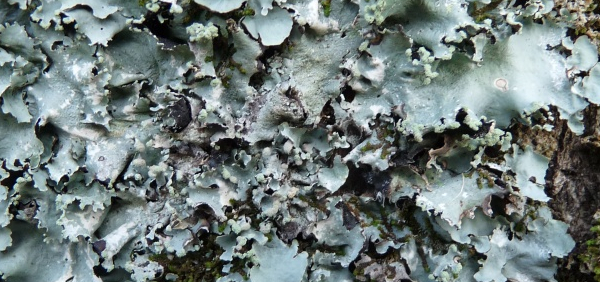kaseru :
 Actinoscirpus grossus (L.f.) Goetgh. & D.A.Simpson of Cyperaceae family is popularly known as Kasheruk mentioned in dravyaguna..The tuber of A. grossus was also used traditionally as hepatoprotective agent. A. grossus is principal weed of four South East Asian Countries occuring in swampy and inundated places, pools, ditches and marshses.
Actinoscirpus grossus (L.f.) Goetgh. & D.A.Simpson of Cyperaceae family is popularly known as Kasheruk mentioned in dravyaguna..The tuber of A. grossus was also used traditionally as hepatoprotective agent. A. grossus is principal weed of four South East Asian Countries occuring in swampy and inundated places, pools, ditches and marshses.HISTORICAL AND MYTHOLOGICAL REVIEW:
There are 2 varieties, the bigger one is called Raja kaseruka and the smaller one called chinchodhah (which resembles Musta in shape)Taxonomical Classification
Kingdom: Plantae - Plants
Subkingdom: Tracheobionta - Vascular plants
Superdivision: Spermatophyta - Seed plants
Division: Magnoliophyta - Flowering plants
Family: Cyperaceae
Genus: Scirpus
Species: Scirpus grossus
Allied species:
Actinoscirpus grossus L.f. (1781), Hymenochaete grossa (L.f.) Nees (1834), Schoenoplectus grossus (L.f.) Palla (1911).VERNACULAR NAMES
Sanskrit: Kaseruka, gundakanda, kaseru, kaseruh, kaseruka, kasheruka, rajakaserukaEnglish: Water chestnut
Hindi: Kaseru
Urdu: Kaseru
Telugu: Guntatungagaddi
Bengali: Kesur, keshura
Marathi: Kasara, kachera, kachora
Oriya: Kasaru Maeda, kasai kanda
Gujarathi: Kasela, kasola
Tamil: Gundatigagaddi
Malayalam: Kazhi muthanga
Kannada: Keasure gadd, kaseruva, kothigadde
Punjabi: Kaseru
Assamese: Kaheru
Chinese: Da piao cao.
Varities:
Classical CategorisationSynonyms
Synonyms in Ayurveda: kaseruka, svalpa kanda, brihad raja, kaseruja, kasherukaKaseru, kaseruka - the plant needs plenty of water to grow
Rasa: Kashaya Madhura
Guna: Guru
Veerya: Sheetha
Vipaka: Maduram
Karma: Pittahara
Anti diarrheal, anti-emetic, non-specifc anti spasmodic, progesterone like activity, and used in digestive disorders. The root is slightly sweet, cooling, laxative, tonic to the liver, diuretic, useful in burning sensations, vomiting, diarrhea and has astringent property
Cultivation:
Actinoscirpus grossus occurs, often abundantly, in swampy or inundated locations, pools, ditches and rice fields, from sea level up to 900 m altitude. It is an important aquatic weed in Southeast Asia. In Indonesia, it is considered a weed of minor importance in lowland-irrigated and tidal rice fields, where it can be controlled manually, by deep-ploughing before seed formation, or with herbicides. In Peninsular Malaysia, it is one of the major weeds of transplanted rice.Propogation:
can be propagated by seed and by stolon parts.Harvesting:
Collection period - February-MarchPhytochemistry:
PHARMACOLOGY:
Important formulationsParts used for medicinal purpose
Leaves, Root, Stem, Underground rhizomes, ,Dosage:
Controversy:
Kaseruka according to Raja Nighantu is Kshudramusta, a small variety of mustaCommercial value:
Scirpus grossus has phytoremediation and medicinal usage. It has great potential to cure various disorder and disease.Morphology:
Stoloniferous perennial, to c. 2 m. Stem sharply trigonous, edges scabrous, sides concave. Leaves c. half of stem length; sheaths 14-20 cm, soft, yellowish green, disintegrating into fibres; blades 60-100 cm x 5-27 mm, flat, greyish green, keeled, margins slightly revolute, scabrous. Anthelodium, c. 12 x 10 cm; bracts to 60 x 1.5 cm; primary branches more than 10, up to 60 mm, two from each basal tubular prophyll, tubular prophylls to 12 mm, with spongy basal part, scabrous; secondary anthelodia up to 65 mm, secondary branches up to 35 mm, two from each tubular prophyll, tubular prophylls c. 5 mm; tertiary anthelodia to c. 30 mm, tertiary branches each ending with solitary spike or with additional peduncled spike (occasionally even small quaternary anthelodium is produced), peduncles to 5-12 mm, bracts c. 4 mm, tubular prophyll c. 3 mm; spikes 3-7 x 2-4 mm, ovoid; glumes 2.4-2.7 mm, cymbiform, barbed, apex rounded, with short mucro, sides nerveless, brown, margin narrowly fringed. Perianth bristles slightly longer than fruit; stamens 3, anther c. 1.5 mm. Nut 1.5-1.6 x 1.1-1.2 mm, widely obovoid, apiculate, finely papillose, glossy, pale brown or brown.Histology:
Geographical distribution:
ECOLOGICAL ASPECT:
In fresh-water swamps, edges of ponds, and in newly opened rice lands at low altitudes from central Luzon to Mindanao in most provinces and islandsPlant conservation:
Least ConcernsGeneral Use:
Swaras of Kaseru is used to jaundice. It cures vomiting and Pitta disorders. Tonic to heart muscles, help in milk secretion and breast development. Skin and eyes disorders.Therapeutic Uses:
Tuber—nutritious, astringent, antidiarrhoeal, antiemetic, galactagogue, hypoglycaemic, diuretic, urinary antiseptic. Used in prescriptions for dysuria, diabetes, genitourinary affections, dyscrasia and as a spermopoietic and liver tonic.Systemic Use:
Administration:
The Ayurvedic Pharmacopoeia of India recommends the powder of the rhizome for promoting spermatogensis and development of breast.Pharmacological:
Clinical trials:
Research:
Precautions:
Habitual abortionToxicity studies:
No adverse effects reportedUse in other system of medicine:
CONCLUSION:
Photos of kaseru -
- Courtesy: https://08511630493324166816.googlegroups.com/attach/997ed0a19e15f717/P1120243.jpg?part=0.7&view=1&vt=ANaJVrFSRmyfLueaaYo4WRDAshSEieEvEb1ok-RFRUkN1sV-hiH-FXskcn_oTZsyQRJLz5Otw-EIn3FfigDJiMofqH2R7s4vz8DN1hAbh7TNNBg_47lS6zs
- Courtesy: https://08511630493324166816.googlegroups.com/attach/997ed0a19e15f717/P1120240.jpg?part=0.5&view=1&vt=ANaJVrHdA_4l7K6G8ZWnoAAlMupod3hEJwLUBKR0bzt9QQ8zbbyvSld2-HSjsKWyUeisBgwXVghaXy0EvpieMK_flDv1tsu90IsTsj12V6m9J2ld5cE8OHc
- Courtesy: https://08511630493324166816.googlegroups.com/attach/997ed0a19e15f717/P1120243.jpg?part=0.7&view=1&vt=ANaJVrFSRmyfLueaaYo4WRDAshSEieEvEb1ok-RFRUkN1sV-hiH-FXskcn_oTZsyQRJLz5Otw-EIn3FfigDJiMofqH2R7s4vz8DN1hAbh7TNNBg_47lS6zs
- Courtesy: http://www.plantillustrations.org/illustration.php?id_illustration=207858
KEY WORDS: kaseru Scirpus grossus Linn.
- » Classification and names of kaseru
- » Synonyms and definitions of kaseru
- » Drug Properties of kaseru
- » Chemical Constituents of kaseru
- » Standardization of kaseru
- » Parts used and Dosage of kaseru
- » Morphology and Histology of kaseru
- » Distribution and Conservation of kaseru
- » Cultivation of kaseru
- » kaseru in the market
- » Medicinal Uses of kaseru
- » Researches and clinical trails of kaseru
- » kaseru in other sytems of medicine
- » Ayurvedic formulations with kaseru
- » Images of kaseru


